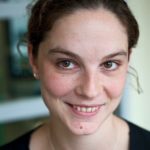Link to Pubmed [PMID] – 38862267
Link to HAL – pasteur-04614647
Link to DOI – 10.1111/imcb.12789
Immunol Cell Biol 2024 Aug; 102(7): 618-629
Individuals with low socioeconomic status (SES) are at greater risk of contracting and developing severe disease compared with people with higher SES. Age, sex, host genetics, smoking and cytomegalovirus (CMV) serostatus are known to have a major impact on human immune responses and thus susceptibility to infection. However, the impact of SES on immune variability is not well understood or explored. Here, we used data from the Milieu Intérieur project, a study of 1000 healthy volunteers with extensive demographic and biological data, to examine the effect of SES on immune variability. We developed an Elo-rating system using socioeconomic features such as education, income and home ownership status to objectively rank SES in the 1000 donors. We observed sex-specific SES associations, such as females with a low SES having a significantly higher frequency of CMV seropositivity compared with females with high SES, and males with a low SES having a significantly higher frequency of active smoking compared with males with a high SES. Using random forest models, we identified specific immune genes which were significantly associated with SES in both baseline and immune challenge conditions. Interestingly, many of the SES associations were sex stimuli specific, highlighting the complexity of these interactions. Our study provides a new way of computing SES in human populations that can help identify novel SES associations and reinforces biological evidence for SES-dependent susceptibility to infection. This should serve as a basis for further understanding the molecular mechanisms behind SES effects on immune responses and ultimately disease.




